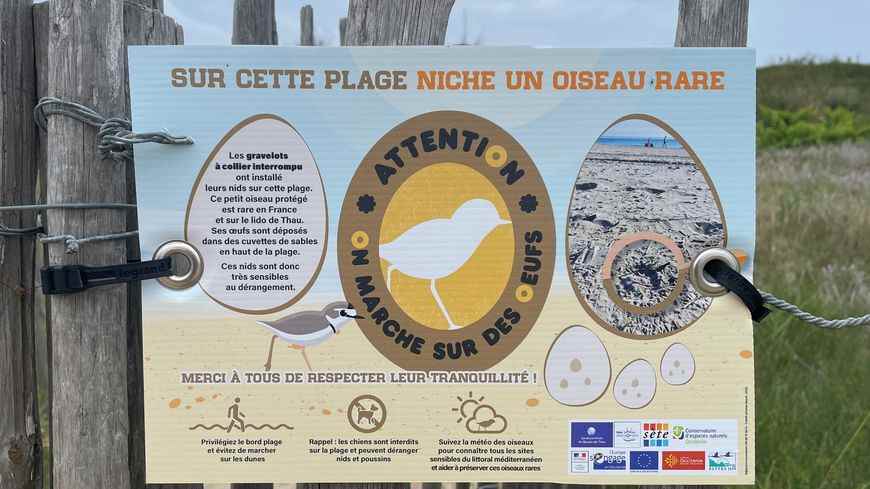Be careful if you go to the beaches between Sète and Marseillan, as well as to the lido de Thau. Gravelots, Terns or even avocets settled in the region several years ago, and nest on the sand, on the ground. The phenomenon is recurrent between April and July, but for the first time, the Syndicat Mixte du Bassin de Thau (SMBT) and the city of Sète alert beach users.
For Camille Pfleger, biodiversity project manager and Natura 2000 facilitator within the SMBT, it is imperative to stay away from affected areas. “I think it’s up to everyone to be responsible and to adapt the use of the beach, remembering that it’s a natural environment and that we’re not the only ones to use this space.“
Let’s just remember that green spaces are more dedicated to nature. Let’s go and our towels to the spaces without vegetation and closer to the water. Camille Pfleger
The main difficulty: spotting the nests in the sand. In reality, for Camille Pfegler, it is complicated for a novice to detect them, users often see them too late, which scares the birds. “They form nests on the ground, in basins and their objective is to become mimetic with the environment so as not to be spotted.
To encourage walkers and holidaymakers to be vigilant on the beaches, signs have been installed at the various access points to them, in the areas concerned. In addition, dogs, even on a leash, are prohibited. Since May 12, a prefectural decree has also been issued to prohibit navigation in the central Tocs areanamely sandbanks at the water’s edge in the Thau basin, until July 31.
This year, we decided to reinforce the communication to remind that the birds are present on the beaches and that it is necessary to adapt its path rather at the edge of water. Camille Pfleger
“For the moment, we are at the stage of pedagogyadmits Vincent Fernandez, responsible for maintaining the beaches for the city of Sète. Perhaps, in a second step, we will consider temporary orders to limit access to beaches during nesting.”
The city of Sète has changed its habits to clean the beaches
The city of Sète also had to change your habits in the way you clean the beaches. “We have 12 kilometers of beach which, previously, were treated mechanically, by a tractor and a large sieve which passed over the entire beach, adds Vincent Fernandez. We realized that this tractor collected sand, shells and that we threw everything in the dumpster. We have therefore reduced the passage of machines in certain areas.
To be informed of the presence of birds on the beaches, do not hesitate to consult “bird weather” to find out the sensitivity of the sites.
